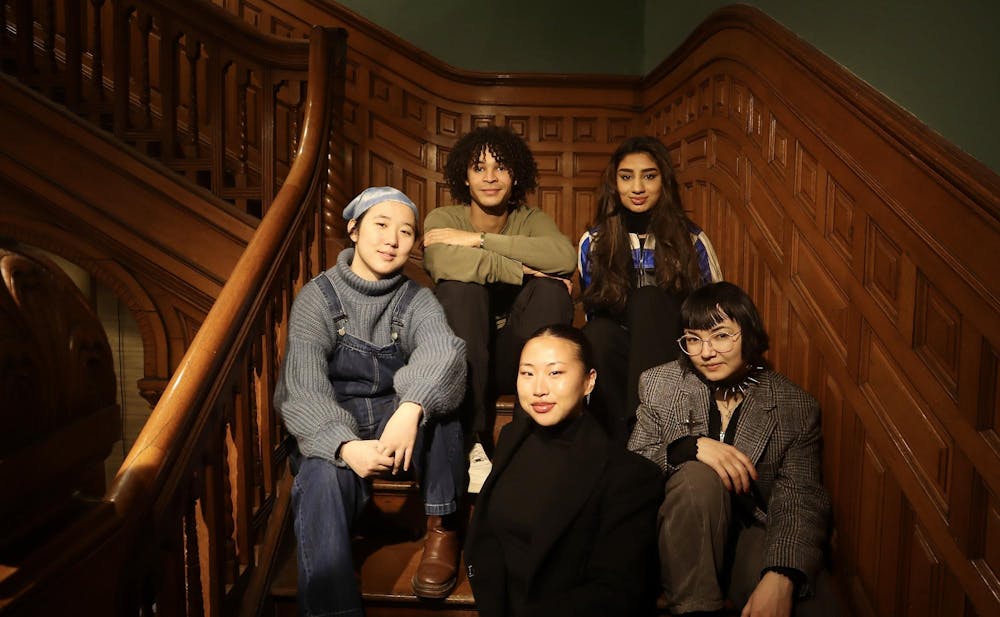Working across a diverse range of art mediums, students from the Rhode Island School of Design seek to craft narratives that reflect personal, cultural and sociopolitical experiences.
The Herald spoke with RISD students Sofia Zhuk-Vasilyeva, Rozella Kim, Mia Wang, Florian Okwu and Paree Rohera about how they use their artwork to tell stories. Each has carved out unique spaces for themselves both on and off campus.

Zhuk created a denim jacket as a statement about the destruction of Maria Prymachenko’s work by Russian missiles.
Courtesy of Sofia Zhuk-Vasilyeva
Developing ‘Beetle Girl’: Sofia Zhuk-Vasilyeva
While creating her apparel design thesis project, RISD senior Sofia Zhuk-Vasilyeva was inspired by her last name “Zhuk,” which is the Ukrainian word for “beetles.”
In her project, Zhuk aims to develop a character named “beetle girl,” using “tailored jackets” to create a story and an “alternate universe” for the persona. “She's like this fantastical hero embracing super fierce and dirty femininity,” Zhuk explained.
Aside from the creation of “beetle girl,” Zhuk’s work has political connotations. Zhuk, who is of Mongolian and Ukrainian descent, felt it was her responsibility to use her work to educate people about the ongoing Russo-Ukrainian war.
In honor of one of her favorite Ukrainian artists, Maria Prymachenko, Zhuk created a denim jacket that aimed to serve as a statement about the destruction of Prymachenko’s work by Russian missiles. “To hear that her work was being potentially destroyed and lost was heartbreaking,” Zhuk said.
Another common theme in Zhuk’s works is her headwear. “It’s an accessory that I have to make because I feel it completes my work,” she said. First inspired by Mongolian headdresses worn at weddings, Zhuk wanted to “embrace my Mongolian heritage and my Asian identity.”
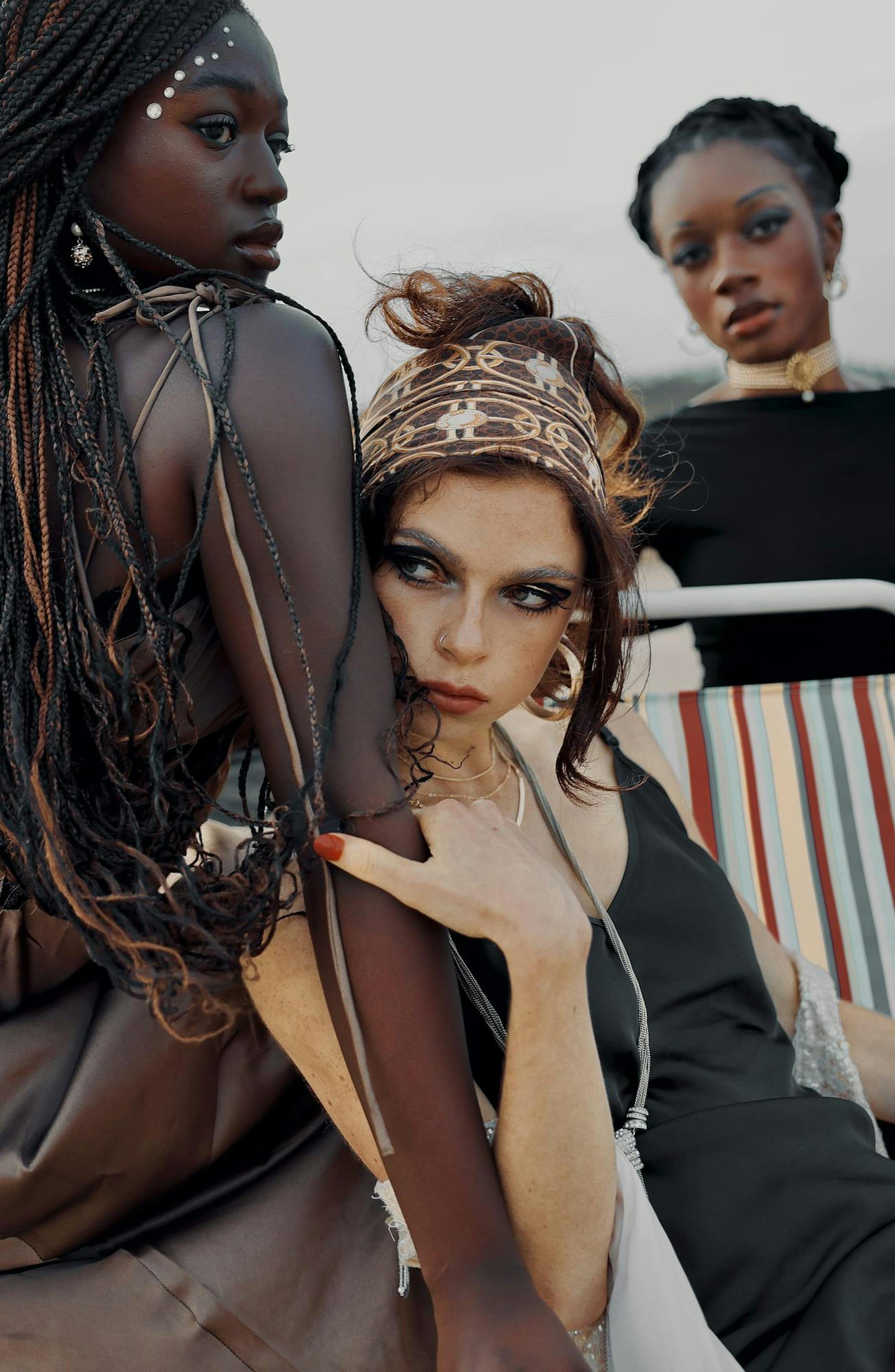
Having worked as an art director in the fashion industry, Kim said that it was a good mix of commercial and collaborative work.
Courtesy of Rozella Kim
Marketing herself in fashion: Rozella Kim
Rozella Kim, also a senior, had her eyes set on RISD since childhood. Although Kim had applied intending to major in painting, it wasn’t until her freshman year that she found a passion for film, animation and video.
When venturing into different forms of photography and videography, Kim said she found a balance between the two through her work as an art director in the fashion industry, which combined commercial and collaborative work.
“That’s how I market myself in the industry,” she said. Kim, who is currently co-president of Fashion@Brown, noted the “relationship-driven” nature of the fashion world and said it provides a good home for “individual development in a collaborative” environment.
“You get the strongest work when you bring all these visions together,” she said.
Kim said that her “most memorable project” involved working on a video for Boyarovskaya, a womenswear brand, during Paris Fashion Week. On set, which she said involved models walking on a ramp and projections on a screen, Kim had the “ability to control how the clothes were shot.”
Having worked with multiple fashion brands to bring their stories to life, Kim wants to “create a story on (her) own terms” for her thesis project. Using archival footage from her mother’s camcorder, Kim’s goal is to present her “family’s narrative” and “reconnect with home.”
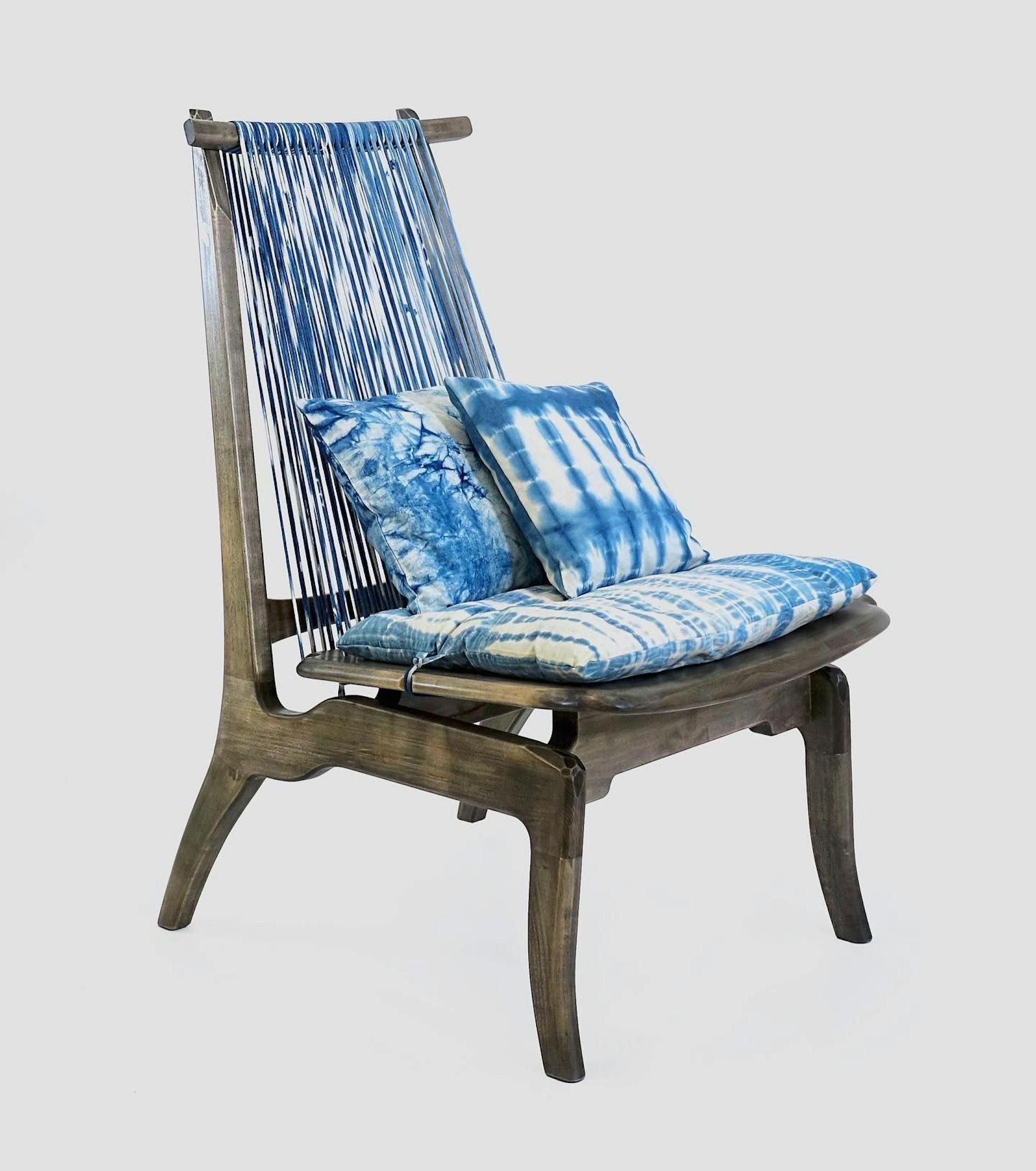
Through her furniture, Wang aims to creatic domestic spaces “simulating nature.”
Courtesy of Mia Wang
‘Creating a domesticity’: Mia Wang
Inspired by her lifelong love for books and comics, RISD senior Mia Wang initially planned on becoming an illustrator. But after taking a spatial dynamics class during her freshman year, Wang realized that she instead wanted to create narratives as a furniture designer.
For her thesis project, Wang wants to explore “the story that the materials can carry.” Her work focuses on layering materials with different textures and dying them together with indigo to “create a domesticity that is the culmination of readings” she has done, including some about Chinese philosophy, Wang said.
Wang’s interest in indigo stems from Yunnan, China. She previously worked with an artist from the region to create a lounge chair combining hardwood and textiles dyed in indigo. This inspired her current work where she dyes wood and textiles to create a bench with “really beautiful printmaking on the wood.”
Wang hopes to have a commercial job but also wants to pursue a private artistic practice where she can tell stories. Through her furniture, Wang embodies the Chinese philosophy of “appreciating materials the way they are” and aims to creatic domestic spaces “simulating nature.”
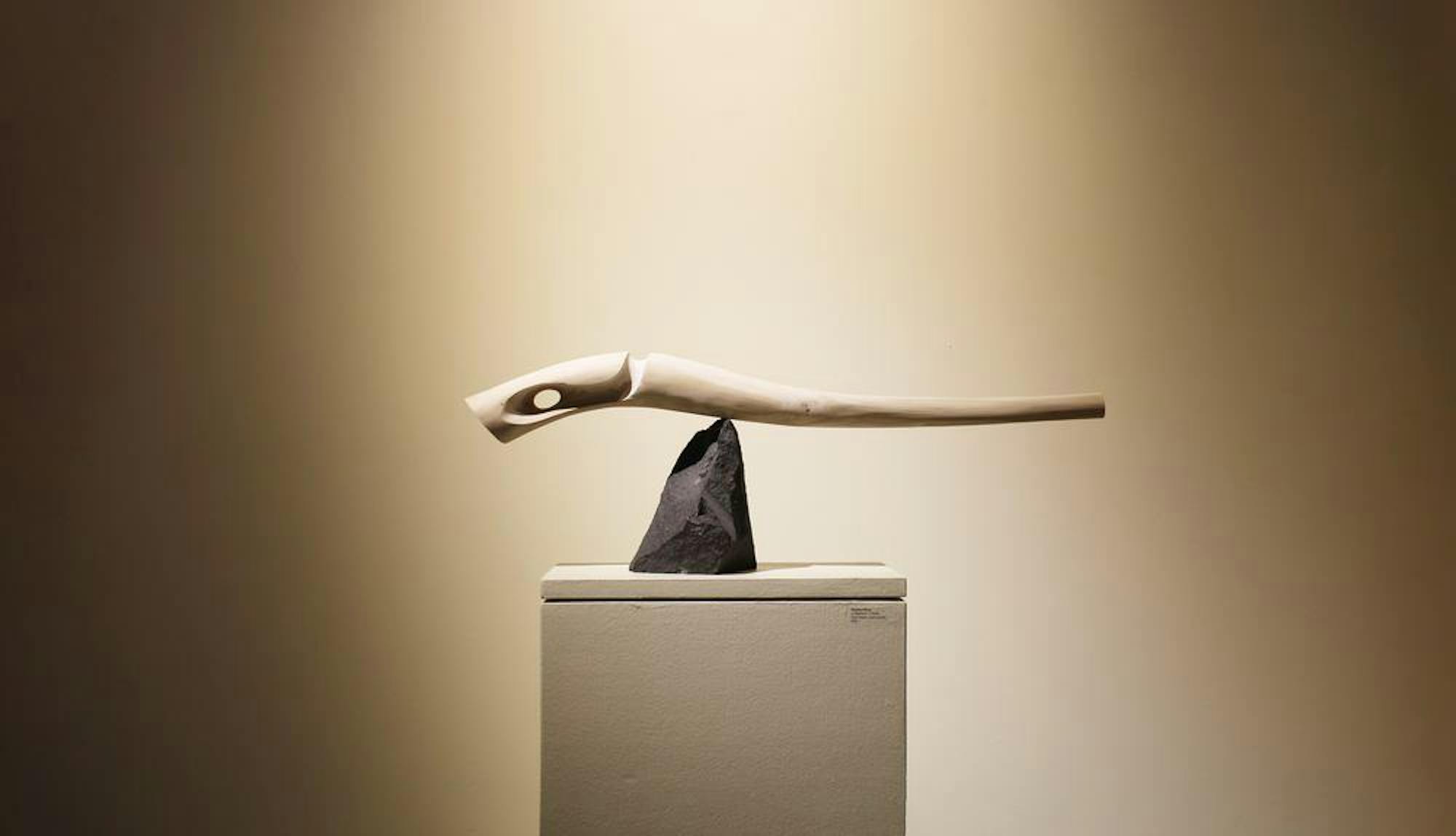
“I love hand-tool carving,” Okwu said, adding that the process of making these tools brings him satisfaction.
Courtesy of Florian Okwu
Experimenting with materials: Florian Okwu
Florian Okwu, another RISD senior, traces his journey to sculpture from a prior focus in creative management, architecture and industrial design. Okwu felt that sculpture allowed him to embrace his artistry more than industrial design did, adding that it builds confidence as a creative person and requires him “to trust myself to get what I need to get done.”
“I love hand-tool carving,” Okwu said, adding that the process of making these tools makes him “feel the most human.”
Speaking about the design process, Okwu said that he dives straight into carving, “seeing what happens.” But because his work is predominantly in wood, he admitted that it is more efficient to have a “certain level of planning.” This can range from preparing detailed sketches or having laid out a theme that he can play off of.
Having worked with wood, graphite, stone and glass, Okwu said that working on the same design in different materials allows for “experimentation to apply an array of skills.” Figuring out the design beforehand also allows him to better understand the materials he is working with.
Okwu aims to produce “repetitive designs” that could be sold to an audience, and he is currently considering a master's degree in furniture design or industrial design. He also wants to strike a balance between “commission-based art practice” and “having work in galleries.”
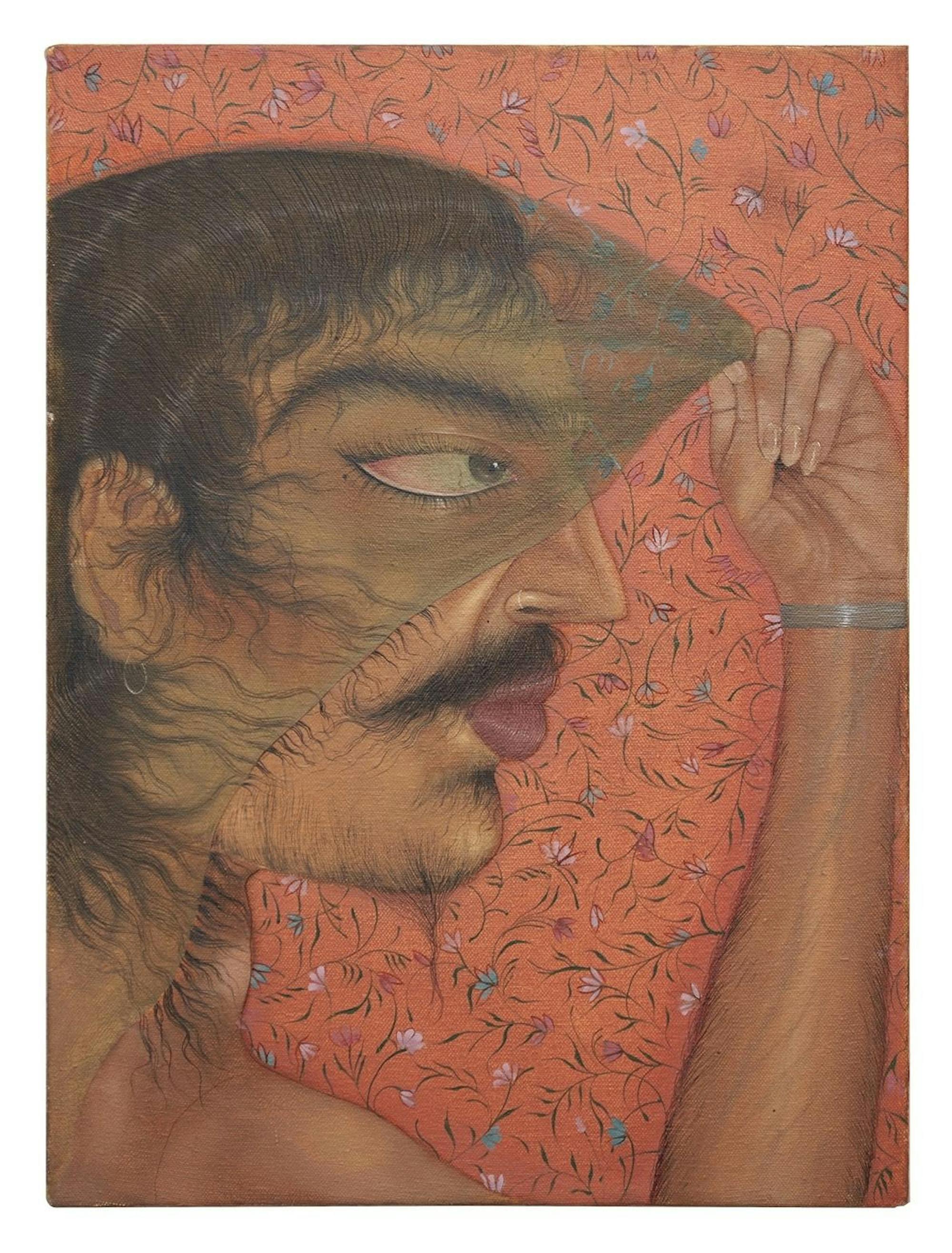
Rohera said that side profiles allow her to hyper-focus on adding details to each strand of hair.
Courtesy of Paree Roherra
Playing with ‘nosiness’: Paree Rohera
Paree Rohera, a RISD junior, explained that she first got into painting because as a shared experience with her father as a child. She also credited time spent with her grandmother, who she “used to love drawing” with.
A prominent motif in Rohera’s work are side profiles of South Asian figures. Through these paintings, she aims to highlight “really ethnic features,” including “bodies with big noses.” She explained that her work is about getting comfortable with a nose that is usually seen as “ugly” from a Western beauty standard, as well as a play on the phrase “let’s get nosy” and South Asian culture’s inclination to “nosiness.”
Rohera added that side profiles allow her to “focus on how the hair falls more” and help her focus on each strand.
Rohera also aims to express her claustrophobia through her work. “It’s like a really big part of my life because it affects me, in all the ways possible,” she said.
Talking about her process, Rohera said that her sketchbook is her “holy grail.”
“I can quickly draw a sketch without thinking of the consequences,” she said, adding that keeping her sketchbook private allows her to “draw freely.”

